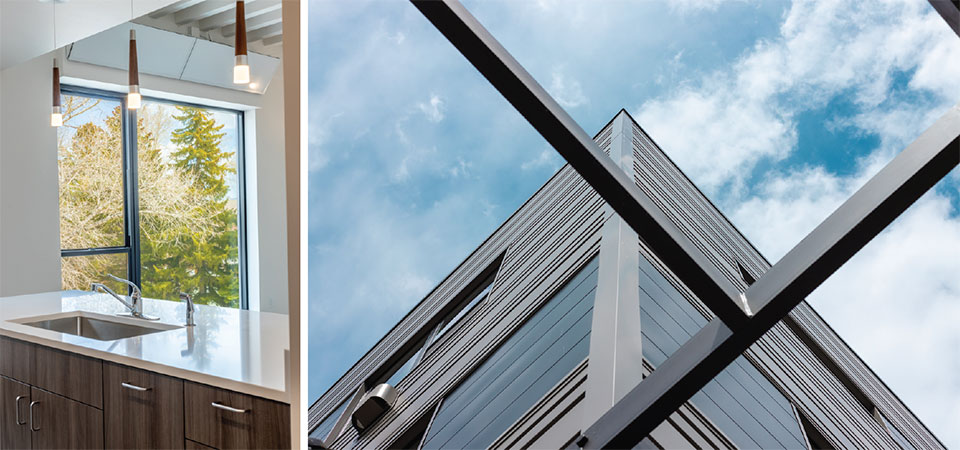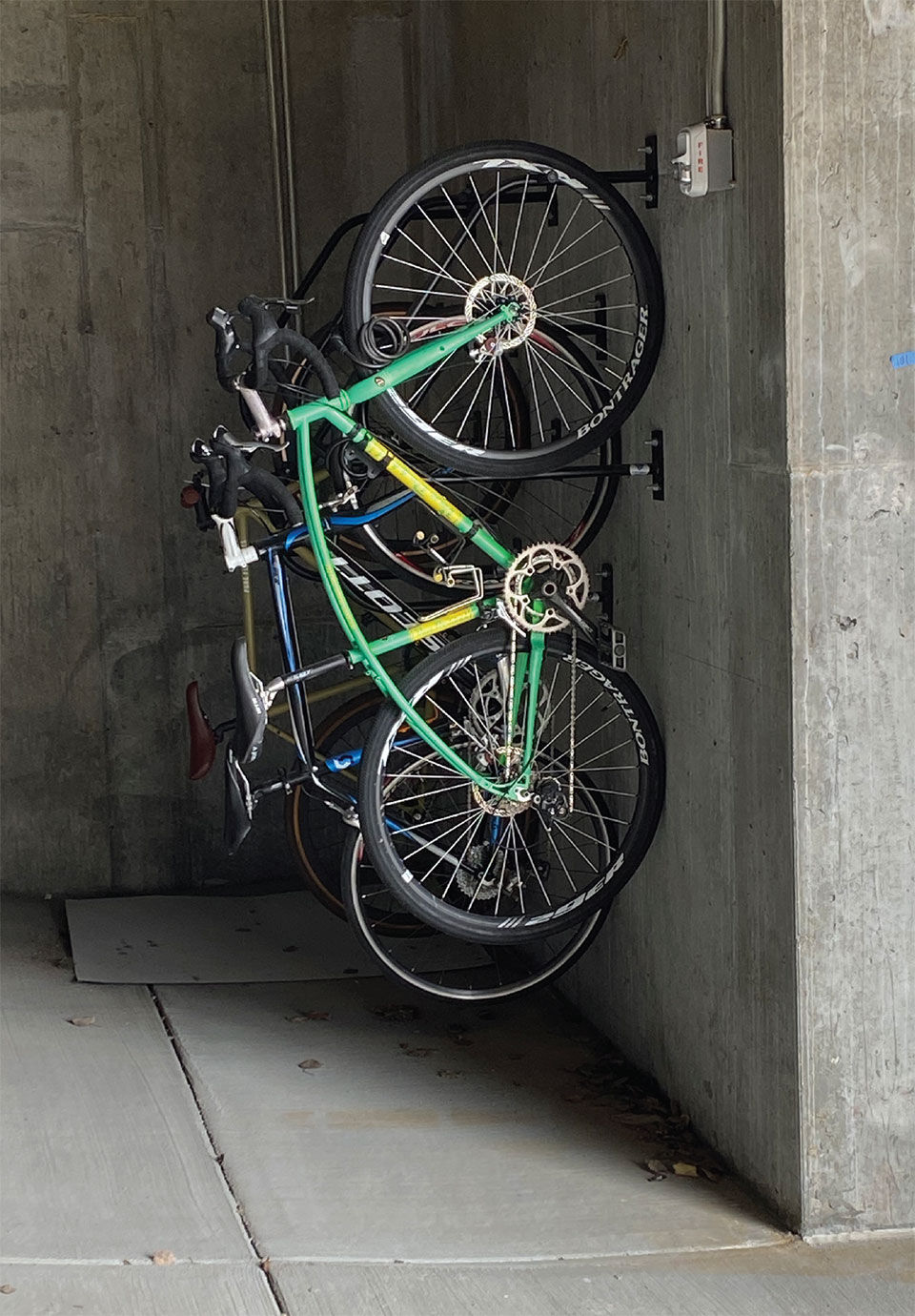Investing for a Different Need
The community value of Jackson’s 2:1 occupancy tool
by Tibby Plasse
Above: The Gables apartment project
Real estate investor, property owner, and property manager Tyler Davis has a passion for everything Jackson and the greater Teton area—and it includes finding a way forward in a very difficult housing market, especially for the local workforce. With that mission guiding his strategic compass, Davis is hoping that other real estate investors and business owners will celebrate the same impulse that he’s discovered by finding the right parcels of land and the right projects to invest in back in his hometown. But he also acknowledges that, in this economy and in the Jackson market, it’s all expensive.
“We really need to figure out how to build the gaps for what we need. There are three buckets of housing. There’s market, there’s workforce, and then there’s affordable. And often workforce and affordable get merged,” he says, noting that workforce only requires that 75% of the applicant’s salary be from Teton County. “Right now, it’s important to figure out how people can find housing who live and work here, not just affordable units,” he adds.
“We really need to figure out how to build the gaps for what we need. There are three buckets of housing. There’s market, there’s workforce, and then there’s affordable. And
often workforce and affordable get merged.”–Tyler Davis, Real Estate Investor, Property Owner, Property Manager

Above: The Mercill project
Davis knows that a local housing project that comes with deed restrictions for affordable and workforce is not going to be a million-dollar stream of revenue—but it still creates revenue. Low-return investment groups do work,” Davis says. “It’s not the normal going rate of return but if investors take a philanthropic approach to their investments and commit more options to the community, more housing projects can pencil—and they still create long-term returns for both the developers and for the town with an increased capacity for year-round residents,” explains Davis.
No one wants to give money away, but Davis says there is an opportunity for philanthropic investors to accept below-market returns in certain projects for the greater benefit of the community. What also pencils is the Town of Jackson’s 2:1 occupancy bonus. April Norton, Director of the Jackson/Teton County Housing Department, says that the density bonus program was created in 2018, and it’s been a small boon for creating more units, which in turn makes more deed-restricted units for the local workforce.
“If we were just talking about vertical value, and it’s just the building, projects can stay around $500-600 per square foot.”
–Tyler Davis
“What we have heard from developers is that even with the rapid price escalation, the 2:1 density bonus tool really does work,” she says. Norton says that public–private charitable partnerships are few and far between based on the land quote alone. “If we were just talking about vertical value, and it’s just the building, projects can stay around $500-600 per square foot,” she says.
One project that recently celebrated a ribbon-cutting and that speaks to Davis’s and Norton’s points is The Gables apartment project, where seven units are workforce-restricted. Davis was the original owner of the hotel, purchasing the Teton Gables in 2017 to house seasonal workers for The Four Seasons. But he had heard rumors that the density bonus and zoning were in the works.

Above: The Gables apartment project
The purpose of the 2:1 Workforce Housing Density Bonus Tool is to encourage development, especially by the private sector, of additional affordable or workforce housing units by allowing additional unrestricted floor area. For the tool to work, the developer starts with a base floor area (FAR) for the site on which s/he would like to build. Based on the zoning, the developer must meet maximum height limits, setback requirements, parking requirements, landscaping requirements, etc. for the project s/he wishes to build. In most cases, the volume of building allowed by the minimum setbacks and maximum height exceeds the volume of the building allowed by the FAR.
The 2:1 tool allows the developer to expand the base FAR to the maximum s/he can build within the allowed height, setbacks, parking, etc. For a developer to use the tool, s/he must provide one square foot of deed-restricted workforce or affordable housing for every two feet of “bonus” market housing created using the formula of 2:1, or 2 Market Square Feet to 1 Deed Restricted Square Foot.
Davis sold the property to the current owner and project developer, Hunter McCardle, founder of Red Roots Communities. Davis now manages the property under his company Wyoming Property Management. McCardle is based out of Charlottesville, Virginia, which he says has its own nuances to face but he says he’s never seen anything like Jackson, a place he’s been regularly visiting since the 1970s and where he has family living in town.
“There’s a lot of pressure in this town because it’s geofenced by public lands, conservation easements, resort properties, and private estates; it’s almost like living on an island. There’s nowhere else to grow, it’s difficult to get supplies to town, and the regulations for the town are pretty high-standard,” McCardle says. “While only a portion of the new apartments are deed-restricted, our personal goal is to have 100% local and we’ve worked lease agreements with various businesses to fill the majority of the building,” he adds.

Above: The Mercill project
McCardle says that housing must address everyone who lives here. “A loss of essential skill labor will result in an unstable economic model, threatening the long-term viability of the town,” he explains. Davis has worked on five workforce-related real estate development projects. He is currently working on the final touches of 105 Mercill Avenue, which offers 30 ownership homes, 20 one-bedrooms, 10 two-bedrooms, and includes five revolving employee rights of first purchase.
The Mercill project has been a collaboration with the Jackson Hole Historical Society & Museum, the Town of Jackson, and Teton County to relocate the historic cabins from the property until the Historical Society’s new space on the Genevieve Block is ready for their placement. St. John’s Health has purchased two of the units and Chris Lee of Design Associates and Joe Rice of Blue Collar Restaurant Group, along with Davis, designed the building and contracted the construction of the project.
“There’s a lot of pressure in this town because it’s geofenced by public lands, conservation easements, resort properties, and private estates; it’s almost like living on an island. There’s nowhere else to grow, it’s difficult to get supplies to town, and the regulations for the town are pretty high-standard. While only a portion of the new apartments are deed-restricted, our personal goal is to have 100% local and we’ve worked lease agreements with various businesses to fill the majority of the building.“
–Hunter McCardle, Founder, Red Roots Communities

